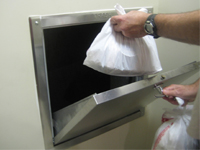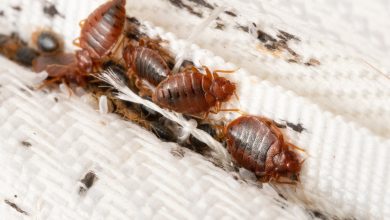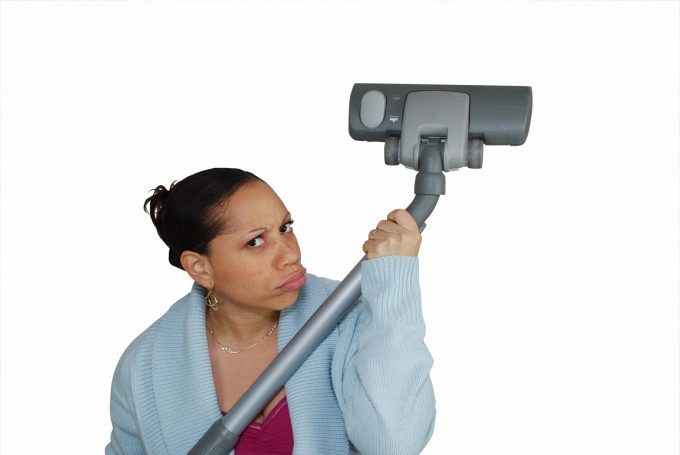
Garbage chute hygiene
Summer is almost upon us, and with the heat comes the familiar whiff of garbage escaping from the chute and bin storage rooms.
While these odours (and subsequent resident complaints) are often the driving force behind a building manager’s decision to install air purifiers in its refuse system, the importance of selecting a system that provides germicidal control should not be overlooked, particularly given that both management and the committee have a duty of care to address the spread of pathogens in common areas.
There are three common technologies for deodorising garbage rooms and chutes; the first is traditional ‘odour neutralising fragrances’ that periodically spray a scented liquid into the room.
The second is general-purpose ozone generators while the third is a new breed of ‘dual air purification’ equipment that combines ozone with additional air sterilisation technologies. Generally these system types all carry about the same monthly price tag so, by understanding the options in the marketplace, you can benefit from the latest technology without asking the committee for an increase in expenditure.
In this article we will focus on ozone generators and the new dual air purification systems. While there are still some odour neutralising fragrances in use, the majority of buildings have now switched to these newer technologies that are offering improved deodorisation and germicidal benefits.
What is ozone?
Ozone is a molecule that consists of three atoms of oxygen (O³). In our atmosphere ozone is created by the Sun’s UV rays and during lightning storms. You may not realise it but you are breathing low levels of ozone every day of your life. In heavily polluted environments such as garbage systems and grease traps, nature’s ozone is likely to be reduced or totally non-existent. This is because when ozone comes into contact with a pollutant (like odours, bacteria or fungi spores) it destroys those pollutants by a method called oxidation and, in the process, the ozone (O³) actually turns back into regular oxygen (O²). It is this characteristic that makes ozone an effective germicidal agent and deodoriser, while simultaneously being friendly on the environment.
Ozone generators
Ozone generators work by simulating one of the processes that nature uses to create ozone – either with an ultraviolet light source (simulating the Sun) or corona discharge (simulating a lightning storm). Both of these methods will split oxygen molecules in the air to create ozone which is then strategically dispersed into areas that require deodorising or germicidal control – such as the bins or garbage chute.
There is one vital consideration when choosing ozone equipment for a garbage chute – if the base of your chute is made from steel, then only ultraviolet ozone generators should be used. This is because the alternative ozone technology (corona discharge) will create nitrogen by-products that are extremely corrosive to steel and have a history of rusting garbage chutes.
The speed that ozone will destroy odours and germs will depend on the concentration of ozone being used. However like all substances, there are workplace health and safety requirements that limit the amount of ozone that can be used within occupied spaces. In order to provide additional deodorisation and germ control than is possible with ozone alone, other technologies must also be used. This has led to a new breed of
equipment which are called dual air purification systems.
Dual air purification systems
The most popular example of a dual air purification system for garbage applications is the Garbage Doctor equipment. These systems integrate two separate air purifiers and utilise a total of three air purification technologies. The first air purifier is an ultraviolet ozone generator, which is usually configured to disperse ozone via a silicone hose as close as possible to the original odour and pathogen source – in most cases that would be the garbage chute and bin or compactor.
The second purifier continually circulates and treats air within the bin room. As the air travels through the purifier, it is exposed to a process called photo catalytic oxidation as well as a second type of germicidal light that is also deadly to bacteria, viruses and fungi spores.
While both germicidal light and ozone generators have a history spanning more than 100 years for water and air purification, photo catalytic oxidation is a relatively new technology by comparison. The PCO processes that is used in today’s air purifiers was developed by NASA in the 1990s for use on their spacecraft and the International Space Station.
The oxidising power of PCO is actually more than twice the strength of ozone, making it extremely effective for germ and odour control. However the oxidiser has a lifespan lasting only a fraction of a second, meaning it will only treat air that passes through the purifier. This makes PCO one of the safest air purification technologies for use in occupied areas. However for garbage applications, best results are achieved when the PCO purifier is used in conjunction with a separate ozone generator, this is because ozone has a longer lifespan and is able to be dispersed into areas where it is not practical to circulate the air.
It is this combination of technologies where dual air purification systems excel – they provide all the benefits of traditional ozone generators, while simultaneously providing a level of deodorisation and germicidal control that is not typically possible using ozone within prescribed workplace health and safety limits.
Questions to consider when selecting your germ and odour control system:
• What technologies are being used? (Is it an odour neutralising fragrance, ozone generator or dual purification system?)
• Is the equipment designed for 24/7 continuous operation in garbage environments?
• Are there local service persons trained in the equipment to respond in the event of failure?
• If you choose to rent the equipment, what services does the rental fee include?
• If you are purchasing the equipment outright, how many services are required each year and do they include the cost of any consumables?
• What is the warranty period?

AccomNews is not affiliated with any government agency, body or political party. We are an independently owned, family-operated magazine.





